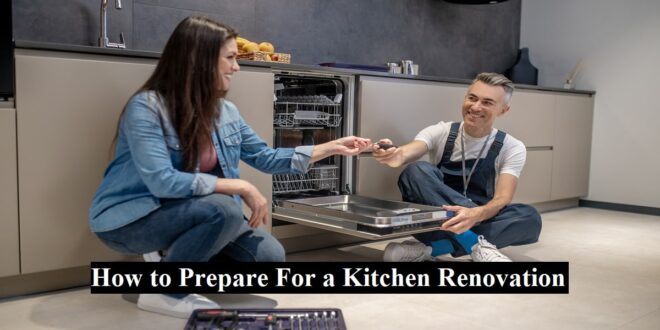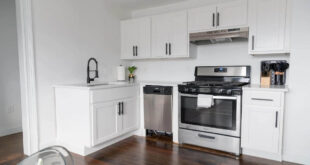A kitchen renovation is a major undertaking for any homeowner. It involves remodeling or replacing the cabinets, appliances, countertops, and lighting fixtures to create a modern and functional space.
Renovating your kitchen can increase its value and give it a fresh look that will make cooking enjoyable. To ensure a successful kitchen renovation, it’s important to plan ahead and prepare in advance.
Start by making a list of what you want to accomplish with the project, such as updating kitchen cabinets, changing the layout, adding extra storage space, or installing new appliances. Create a timeline of when each task needs to be completed so that you can stay on track during the renovation process.
Finally, research qualified contractors who specialize in kitchen renovations so that the job is done correctly and professionally.
Planning Ahead
Planning ahead is the key to a successful kitchen renovation. Start by developing a budget and timeline, which will help you stay on track and ensure that you don’t overspend. Research contractors or designers and make sure that they have experience in kitchen renovations.
You should also create a list of materials you want to use, such as appliances, countertops, flooring, and paint colors.
Finally, take measurements of your existing kitchen layout so that you can communicate effectively with your contractor about the space requirements for your new design.
Create a Budget and Stick to It
Creating a budget and sticking to it is essential when it comes to kitchen renovations. Before beginning the project, set a realistic budget for materials and labor. Consider factors such as plumbing, electrical, cabinetry, countertops, appliances, and more. Research prices for each item you need and compare them before making your selection.
It can also be helpful to create a contingency fund in case unexpected expenses arise during the renovation process. Once you have a budget in place, stick to it as closely as possible. Maintaining financial discipline will help prevent any surprises or disappointments down the road.
Measure Before You Buy
When it comes to kitchen renovations, it is important to measure before you buy. To ensure that all of your materials fit correctly, take accurate measurements of the space before making any purchases. Consider factors such as appliances and cabinetry, as well as countertops and flooring.
Make sure that the measurements are correct and double-check them if necessary. It may also be helpful to draw a diagram of the room with the measurements included so that you can visualize how everything will fit together.
Research Appliances & Fixtures
When it comes to planning for a kitchen renovation, researching appliances and fixtures is an important part of the process. From stoves and refrigerators to cabinets and countertops, there are a variety of options that can help create the perfect space. Start by exploring different models, brands, and styles to identify which features you prefer. Then compare prices to make sure you get the best bang for your buck.
Additionally, take into consideration energy efficiency ratings when selecting appliances; this will help reduce utility bills over time. Once you have narrowed down your choices, read through customer reviews to gain insight into quality and performance before making a final decision.
Taking the time to research appliances and fixtures will ensure that you get exactly what you need for a successful kitchen renovation project.
Find the Right Contractor For the Job
Finding the right contractor for a kitchen renovation project is essential to getting the job done correctly and efficiently. Start by gathering referrals from family, friends, and neighbours who have had similar renovations completed in the past.
Ask them questions about their experience with the contractor, such as their level of customer service and overall satisfaction. You can also use online resources to find reputable contractors in your area. Make sure to read reviews and check out their portfolio of work before making any decisions.
Once you have identified a few potential candidates, schedule consultations to get an estimate on the cost and timeline for completion. Be sure to ask questions about the scope of work that will be included as well as any warranties or guarantees offered.
Clear Out Your Cabinets & Drawers
Before beginning a kitchen renovation, it is important to clear out all cabinets and drawers. Start by removing any items that are no longer needed or used. This includes dishes, pans, utensils, and small appliances.
Place these items in their respective boxes or containers to make them easier to move around the room while working on the renovation. It is also important to remove any food items stored in the cabinets and drawers as they can attract pests during construction.
Once everything has been cleared out, you can use this opportunity to deep clean all of the surfaces with a natural cleaner before reinstalling them once the project is complete.
Disconnect Any Existing Plumbing and Electrical Wiring
Once the cabinets and drawers have been cleared out, it is time to disconnect any existing plumbing and electrical wiring. This includes turning off the main water supply and shutting off all circuit breakers in the area.
It is also important to label all cables and wires so that they can be reconnected easily after the renovation is complete.
If you are not comfortable with handling this part of the project, consult a professional electrician or plumber who can help with the process. They will be able to ensure that everything is done safely and according to code standards.
Remove Wallpaper or Paint on Walls and Ceilings
Removing wallpaper or paint on walls and ceilings can be a daunting task, but with the right tools and knowledge, it can be accomplished. To begin, make sure you cover any furniture or appliances in the area with plastic sheeting to protect them from any debris. Once this is done, use a putty knife to scrape off as much of the wallpaper or paint as possible.
If you are dealing with wallpaper, you may need to use a steamer to remove any stubborn pieces. When all of the loose material has been removed, use a damp cloth or sponge to clean the surface before sanding down any uneven areas. Finally, apply primer before painting or hanging new wallpaper if desired.
Prepare the Floors & Countertops for Installation or Replacement
Preparing the floors and countertops for installation or replacement is an important part of a successful kitchen renovation. To begin, remove any existing flooring and countertops as well as any nails or screws holding them in place.
If you are replacing the countertops, it is best to use a circular saw to cut the new pieces to size. Once all old materials have been removed, prepare the subfloor by cleaning it thoroughly with a vacuum and then lightly sanding it. When all dust has been cleared away, apply adhesive or mortar to the subfloor before laying down new flooring or countertop material.
Additionally, if you are installing a tile backsplash behind your counters, make sure to measure and mark out where each piece will go prior to tiling.
Dealing with Waste During a Kitchen Renovation
When undergoing a kitchen renovation, dealing with waste is an important consideration. Firstly, it is essential to remove any old fittings and fixtures in order to make way for the new design.
This can be done either by hiring a skip or using a rubbish collection service. Be sure to check local regulations and restrictions before beginning the process of disposing of waste.
Additionally, it is important to consider the materials used in your renovation; many items such as tiles and wood can be recycled where possible, so be sure to research recycling centers near you that accept these materials.
Finally, when selecting new appliances for your kitchen, avoid purchasing products with excessive packaging and opt for products that are easy to recycle. With careful planning and consideration of waste disposal options, you can ensure that your kitchen renovation project runs smoothly from start to finish!
Recycling, Reusing, Donating Unwanted Items
Recycling, reusing, and donating unwanted items can all be great ways to reduce waste during a kitchen renovation. Recycling materials such as metal cabinets, appliances, countertops, and tiles help keep these resources out of landfills and preserve the environment.
Reusing existing materials in your new kitchen can also save you money on buying replacements. For instance, instead of purchasing a new sink, you could reuse the old one in a different location.
Finally, donating unwanted items is an excellent way to help others in need while giving your old items a second life. Charities and thrift stores are always looking for donations, so consider donating any furniture or appliances that are still in good condition rather than throwing them away.
 Make Home Smart Let's Make Smart Home for Everyone!
Make Home Smart Let's Make Smart Home for Everyone!




